News
For the Love of Caddieing

Some are household names among golf fans. Mike (Fluff) Cowan—and his walrus mustache—comes to mind. A few struck it rich, such as Steve Williams in his 13 years with Tiger Woods, and Jim (Bones) Mackay, who has worked with Phil Mickelson since 1992. But those are the exceptions, and they work on the PGA Tour. Among caddies, they are the haves.
The have-nots are those who shoulder bags on the LPGA Tour, trying to survive where the prize money—and potential income—is one-fifth of what’s available on the men’s tour, with the same lack of job security, healthcare and pension.
Looping on the LPGA Tour is a labor of love laced with economic hardships requiring perseverance, imagination and a supportive family. It’s a life where veteran caddies say only about 30 percent last more than 10 years. Yet, a hardy handful of lifers have blown past the quarter-century mark.
John Killeen, 58, is among those captivated by the lifestyle that is alien and often absurd. He has been a caddie on the LPGA Tour for nearly 35 years, with Patty Sheehan, Juli Inkster, Ayako Okamoto, Meg Mallon, Cristie Kerr and others, before landing his current gig with Mirim Lee, winner of last week’s Kia Classic.
Last year, when Killeen was still working for Angela Stanford, he said goodbye to his wife, two teenage kids and home near Atlanta for a swing that took him to the Bahamas, Florida, Thailand, Singapore, Arizona, California, Hawaii, Texas and Alabama. From mid-May, when he took a week off for his son’s high school graduation, until the Olympics in August, Killeen had only one other scheduled week off.
How do you make a life like that work financially and emotionally? For starters, you need a lot of help from your friends. Imagine that house you shared with your buddies in college and the fun you had. Now imagine that house moves around the country—one golf tournament after another. That’s what life is like for Killeen and a handful of his fellow caddies who share living quarters when possible to save money and find sanity in each other’s company. They love the life, each other, golf and the competition. It’s not the money that keeps them chasing this nomadic existence.
In recent years, Killeen was one of eight caddies who rented a house at the Bank of Hope Founders Cup in Phoenix. I spent a week with them, and there are few experiences more valuable and fun for a journalist than hanging with caddies. They know everything—or at least think they do. And they know how to have a good time.
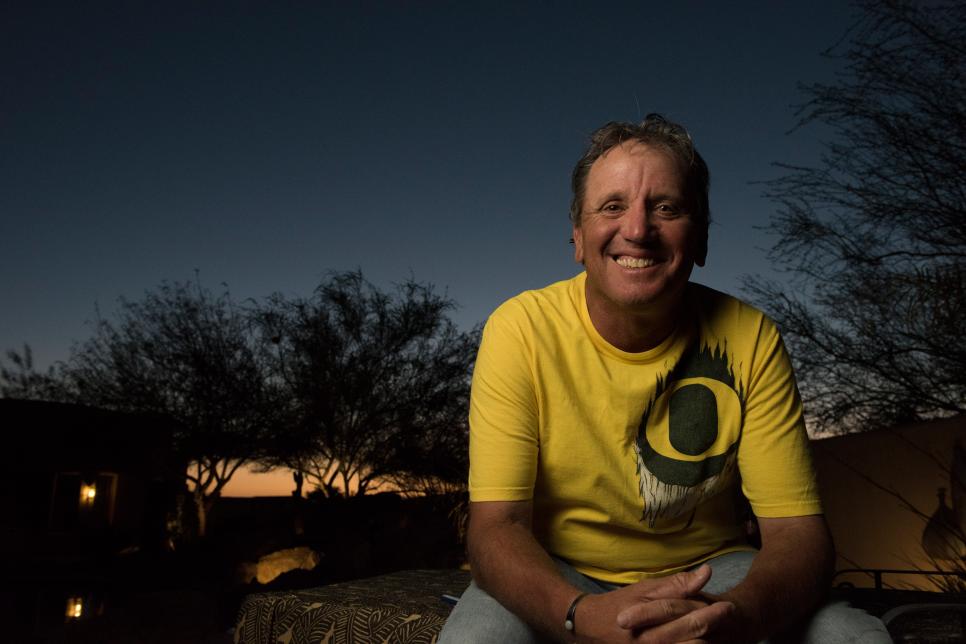
J.D. Cuban
Killeen is the “godfather” who finds the house, coordinates the Monday run to Costco to buy food and drink—in Phoenix the first 60-pack of beer was knocked off by Tuesday night—and does all the cooking.
Also in this Gang of Eight was Barry (Rock) Cesarz, 47, who has worked with Morgan Pressel since 2009, an eternity to be with one player on any tour, especially the LPGA. He also caddied for Donald Trump at one of his Florida courses for nine years, an experience he describes as “very interesting.”
Craig Castrale, 39, who works with Mo Martin, is Mr. Spreadsheet. Laptop in hand, he shouts across the living room over the big-screen TV that’s always on sports: “Kyle, you going to be in Toledo?” as he records who will be where, who owes what and who has paid.
Scott Lubin, 45, a former caddie for Jack Nicklaus on the Champions Tour who looped for Yani Tseng at the 2016 Founders Cup, was part of the group. He has since opted for the security of being caddiemaster at Loxahatchee Club in Florida. At 27, Drew Ernst is the youngest of the group. He carries for his sister, Austin Ernst. Then there are the boys from Augusta, Ga.: Kyle Bradley (Jessica Korda), Jack Fulghum, (Nelly Korda) and Derrick Redd (Caroline Masson).
Bradley, 36, caddied at Augusta National, home of the Masters, and played mini-tours for nine years before picking up Korda’s bag in 2014. “The best part of our job is helping top-notch players try to win a championship,” Bradley says, something he has done with Korda three times. Then he makes a confession that applies to many LPGA caddies: “No chance I could work in an office.”
Redd, 48, also known as “168,” his Augusta National caddie number, and Fulghum, 45, still work at Augusta National, which is conveniently closed from mid-May to mid-October, when the LPGA schedule is in full swing.
•••
EKING OUT A LIVING
Fulghum has been at Augusta National for more than 20 years, and for many LPGA caddies, those private-club jobs are too lucrative and reliable to give up. T.J. Jones, a longtime caddie at Seminole, heads back to the exclusive Florida club whenever he has an off-week with Christina Kim.
“You have to finish in the top 40 [on the money list] out here to have a significant year,” says Killeen, who in 1984 at age 23 and planning to be a stockbroker, told his mother and girlfriend in Portland, Ore., he’d be back after a two-week stint caddieing, then came home eight months later and said he’d found his calling.
In Phoenix, the eight men in the house paid $430 each for rent. There were two rental cars, plus Castrale’s car he drove from Palm Desert, Calif. Food and drink came to $125 a man, with the rental cars totaling $100 each. Castrale says the seven guys who flew in averaged about $250 for airfare. That put the total expenses per person at $905 for the week, much less than it would have cost to stay in a hotel, not to mention food and drink.
These days, caddies are sometimes fired by text message. One was fired by telephone on Christmas Eve and told: ‘We were disappointed we didn’t win a major this year.’
“Some weeks, like Asia events, all we pay for is food and hotel because we have no rental cars and 99 percent of the players pay for international caddie flights,” says Castrale. “But then Hawaii and San Francisco, for example, I spend $1,500 at least. Overall, $1,000 to $1,200 per week is our typical average expense for the 25 to 30 events played.”
The way it works, the caddies say, is they get on average a guarantee of $1,000 to $1,500 for each week the player competes. If your player misses the cut, that’s all you get. On average, a caddie gets 5 percent of a made-cut check, 7 percent of a top-10 check and 10 percent for a win. Some players are more generous than others.
Now what kind of money are we talking here? No. 40 on the LPGA money list last year—Moriya Jutanugarn, older sister to player-of-the-year Ariya—earned $446,948 in 29 starts with two top-10 finishes. Those two top-10s earned $170,895, with the caddie’s 7-percent share coming to $11,962.65. The other 22 cuts made earned $276,053, and 5 percent of that is $13,802.65. Assume the caddie got $1,000 a week, and the total for the year would be $54,765.30 before taxes. And then there is about $35,000 in expenses. That’s a break-even proposition.
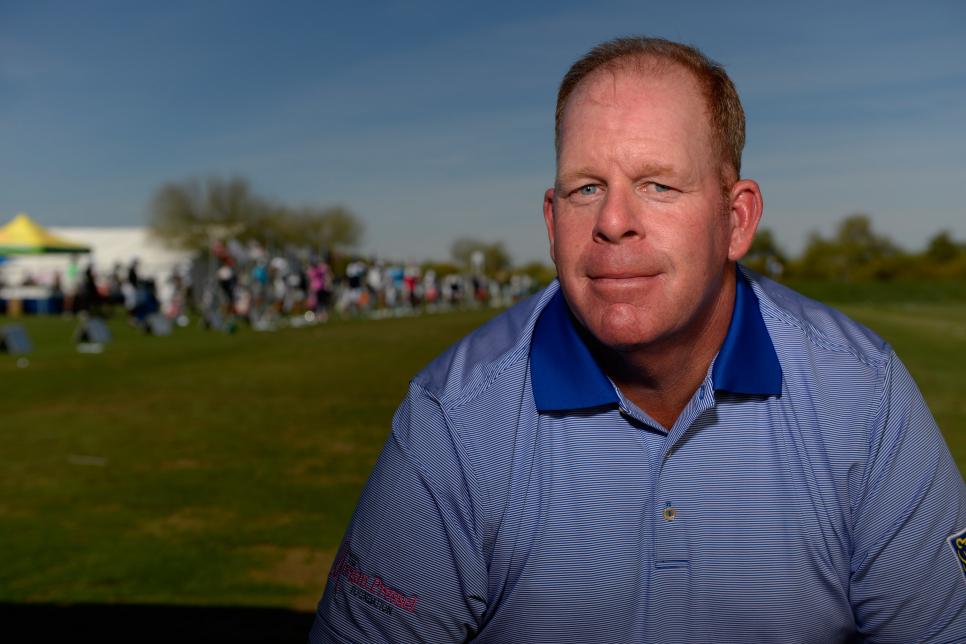
J.D. Cuban
On the PGA Tour, prize money is north of $300 million annually (plus $35 million in FedEx Cup bonus money), and the LPGA Tour purse is $67.3 million. No. 40 on the PGA Tour last year—James Hahn—earned $2,367,521, which would have been No. 3 on the LPGA Tour, with a whopping 10 missed cuts but a victory among his three top-10 finishes in 26 starts. Let’s assume the caddie got $1,200 a week. With the $195,321 he would earn on the course, in 26 weeks he’d total $226,521—more than four times what the caddie for No. 40 on the LPGA made.
In other words, the caddie for No. 40 on the PGA Tour made more money than the player ranked No. 74 on the LPGA Tour money list.
To make ends meet, most caddies on the LPGA Tour rely on income from a spouse or another job. Jeremy Young, who caddies for Minjee Lee, is married to Heather Bowie Young, who played 17 years on the LPGA Tour. Heather is now an assistant coach at Clemson, but when she was on tour, Jeremy rarely caddied for her, doubling their chances of making money that week. Killeen married Denise Baldwin, a longtime LPGA player who now has the financial security of being a teaching pro.
•••
CADDIES WEAR MANY HATS
Besides the financial challenges, the job of a caddie has become a lot more complicated. Golf has evolved into a sport in which players practice harder and want their caddie at their side as they hit balls. The travel is also vastly different from when Killeen started.
Instead of a stretch with four tournaments in Ohio, three in New York and two in New Jersey, the LPGA this year goes from France to New Zealand to China to South Korea to Taiwan to Malaysia to Japan and back to China before ending in Florida. The 2017 LPGA schedule has 35 events, 17 of those in 14 countries outside the United States.
Although it’s fun to recite the caddie creed of “Show Up, Keep Up, Shut Up,” the job is way more complicated than that. Pretty much the only time off is the weeks your player is not competing. Monday and Tuesday used to be an opportunity for a caddie to sneak in some golf. Now those days are reserved for working with players on the range or playing a practice round.
The days of the hard-living bag-toter who would close the bars at night and work the next day through bloodshot eyes are mostly gone. These loopers are more than mere porters lugging around a 45-pound staff bag. Caddies have evolved into a mix of mathematician, psychologist, cartographer and bodyguard, all while remaining a Sherpa.
“Oh, my, those early days,” says Killeen, smiling. “At our house in Oakmont in 1992 [for the U.S. Women’s Open] we had empties stacked up this high,” he said, holding his hand over his head. “What do I like the most about this job? The people. The travel. The fact I have half the year off.”
And Killeen clearly relishes his role as house father of the group.
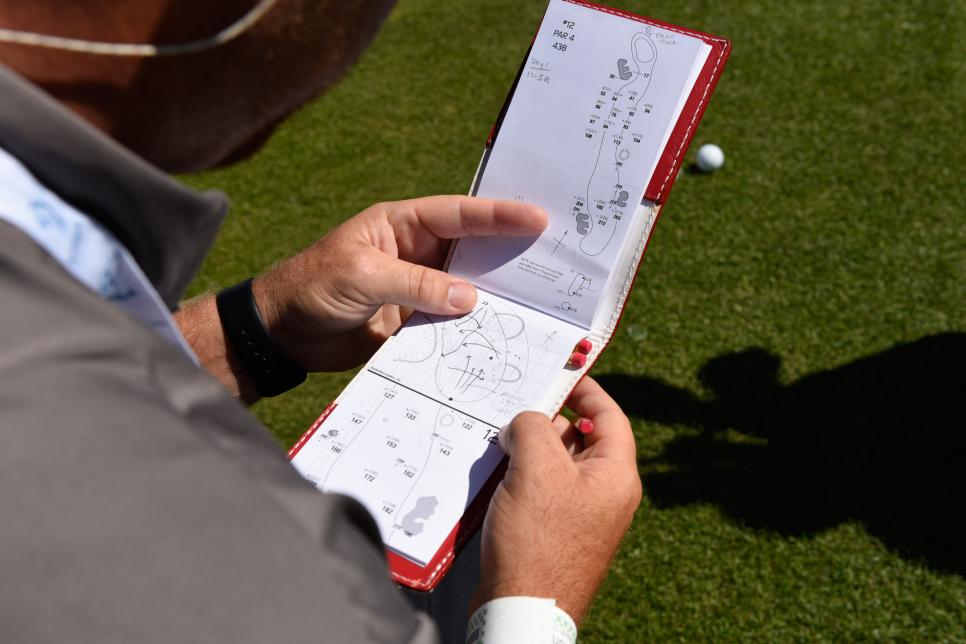
J.D. Cuban
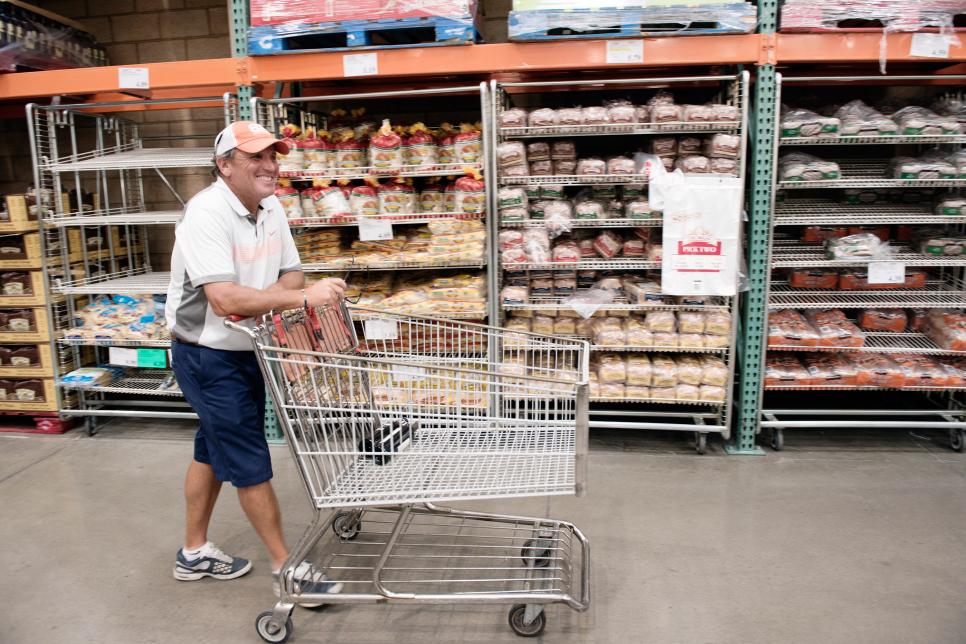
J.D. Cuban
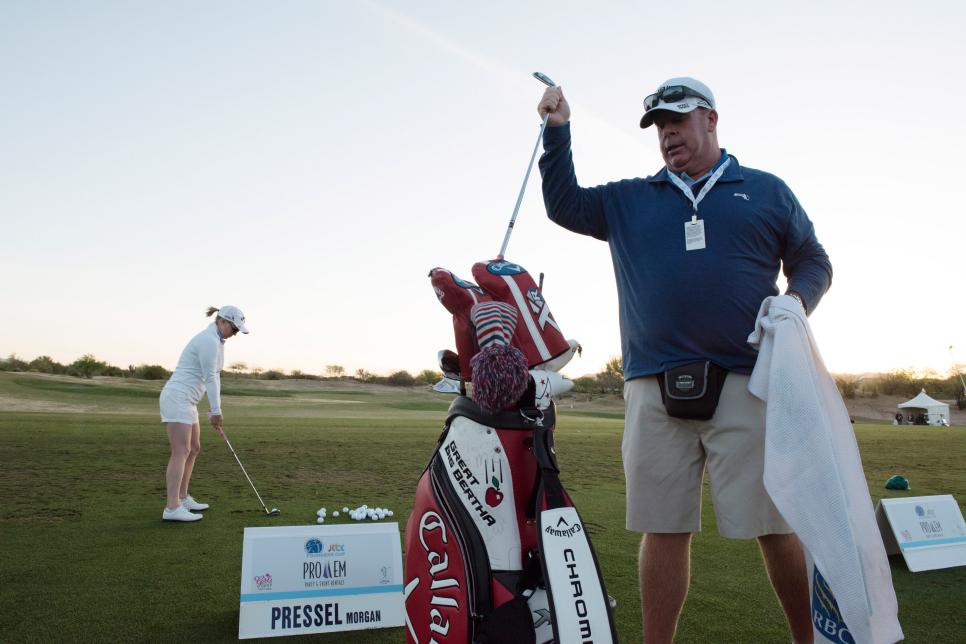
J.D. Cuban
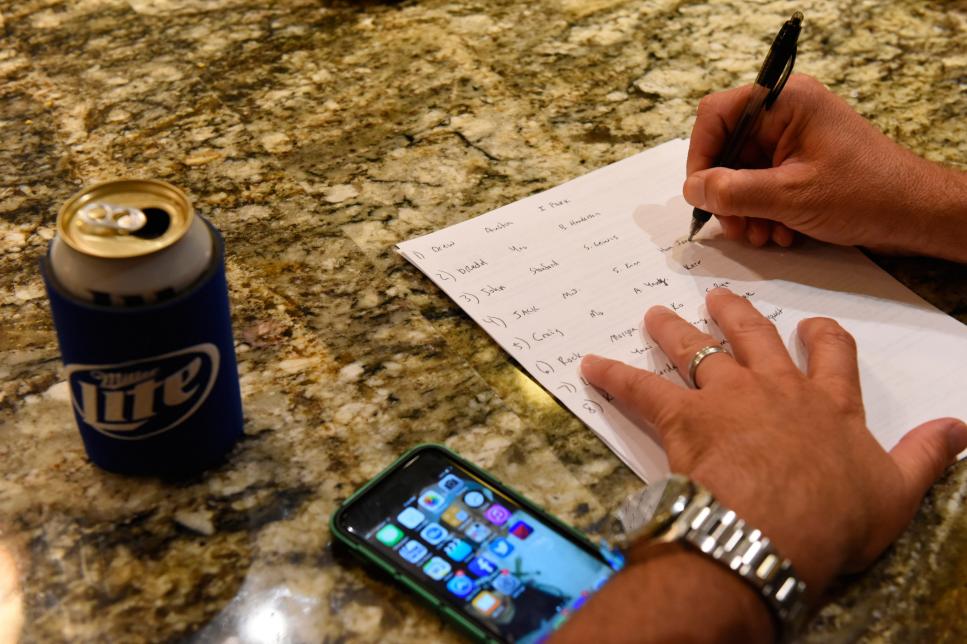
J.D. Cuban
“You should have smelled it this morning,” Castrale says about their shared house in Phoenix on Thursday. “At 5 a.m., he’s already got the Irish stew simmering. John sent out a group text telling us where the car was parked and saying, ‘Early guys, when you get home, don’t forget to stir the stew.’ ”
On Monday it was spaghetti and meat sauce, salad, red wine and beer. Tuesday was a caddie party with free food and drink at a local bar. On Wednesday, Killeen made tacos, refried beans and rice, and Thursday was the Irish stew.
“We’re all prepping for the tournament, and he’s prepping for the meals,” Bradley says with a laugh.
Spending a week with eight caddies is like that house you remember from college in another way: You wake up the next morning with your body aching from how much you laughed the night before.
Caddies refer to a former player as “my ex,” as if talking about a divorced wife. In Phoenix, when picking five-woman $20 calcutta teams, which must include your own player, one of the eight says: “My player ain’t ready. How about we be creative this week and pick another guy’s player?” He was right: His player missed the cut.
As you might expect, there’s a great deal of good-natured ribbing. One caddie says to another: “You get your degree yet?” That prompts a befuddled: “What degree?” And then the zinger: “Your nursing degree,” the first caddie says, nodding toward the other guy’s half-empty drink glass.
Caddies also look out for one another. When the tee times start to arrive on smartphones, the coordination of eight players and three cars begins. “Kyle is right before me, and I’m with Drew, that’s one car,” says Castrale, ever the organizer.
•••
YOU’RE HIRED, YOU’RE FIRED
The LPGA says about 150 caddie ID cards are issued annually. Some show up at tournaments without a bag, hoping to pick up a Monday qualifier or catch on with a player who just fired her caddie—not a rare experience.
These days, caddies are sometimes fired by text message. One was fired by telephone on Christmas Eve and told: “We were disappointed we didn’t win a major this year.” To which the caddie said he was thinking: Hey, I’m not the one who hit that ball that’s still bouncing down Bob Hope Drive.
Another caddie was fired by his player’s agent at a gate at the Manchester airport the Monday after the 2006 Ricoh Women’s British Open. And then there was Jason Gilroyed, who was fired by Jessica Korda at the turn of the third round of the 2013 U.S. Women’s Open and replaced by her boyfriend.
“I was in that group, and we were on No. 10 tee,” says Killeen, who was working for Lizette Salas at the time. “I look over, and Jason wasn’t on the bag. I had no idea what was going on.” Later that evening, while sitting at a bar, Killeen nudged me and showed me his phone. On it was a text from Gilroyed that read: “Miss me yet?”
The good memories, however, tend to outweigh the bad ones.
The Evian Championship in France, with its rich purse, exotic setting on Lake Geneva and free beer garden for caddies, is the source of many of those memories. Hotels have combination locks activated after 11 p.m. That has confused more than one over-served caddie returning after an evening out.
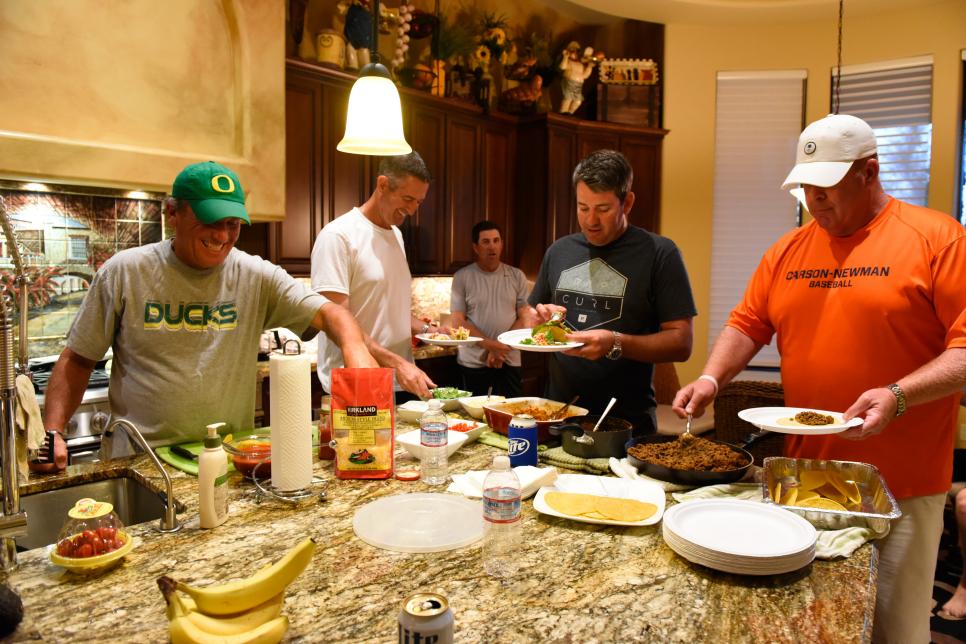
J.D. Cuban
One who couldn’t get in tossed a plastic chair at his room window, hoping to wake his roommate, who had an early tee time. Instead, police were called, the caddie was hauled to jail, and his player had to bail him out at 4 a.m. Another caddie took a more humble rout. He curled up on the curb and slept there.
Then there was the father who berated his daughter’s caddie so badly he quit. The next day, with Dad on the bag, the player got a bad yardage and hit a 7-iron out-of-bounds over a green. The caddie waited for his ex to finish then politely told Dad: “At least I can f---ing add.”
And in the days when Evian ended on Saturday and the pro-am was Sunday, there was often the amusing situation of caddies hiring caddies because they were too hung over to hoof the mountainous course.
But as carefree as caddies can be, they are amazingly devoted to golf, often the frontline conscience of the tour when it comes to the Rules of Golf. As committed as most players are to the rules, caddies are even more.
When two competitors played the wrong ball, it was a caddie who blew the whistle on his player. When a player used a training aid during competition, it was a caddie who called it to the attention of officials. And one caddie insisted they play her original ball, and not the better-positioned provisional. She relented—then fired the caddie.
There is also no question gender makes the relationship between an LPGA player and her caddie more complicated than it is on the men’s tour. Successful pairings become like old married couples sniping at each other.
“OK, let’s pretend like you’re working and take some video,” Pressel says to Cesarz on the range in Phoenix. The two are very close and enjoy poking fun at each other’s idiosyncrasies. “She hates the balls in the bag [on the practice range], and she hates them in a pyramid,” Cesarz says. “First thing I do is mess them all up.”
Lubin is one who has worked the men’s and women’s tours. “What’s the difference?” he says. “That’s a loaded question. I guess the pace. It’s a slower pace out here. Also, because it’s a male-female thing, it’s a much more volatile situation. Guys have a fight, and by the time you leave the tee box, it’s done. Out here it can linger for a few holes—or nine, or 18 or 36,” he says, laughing.
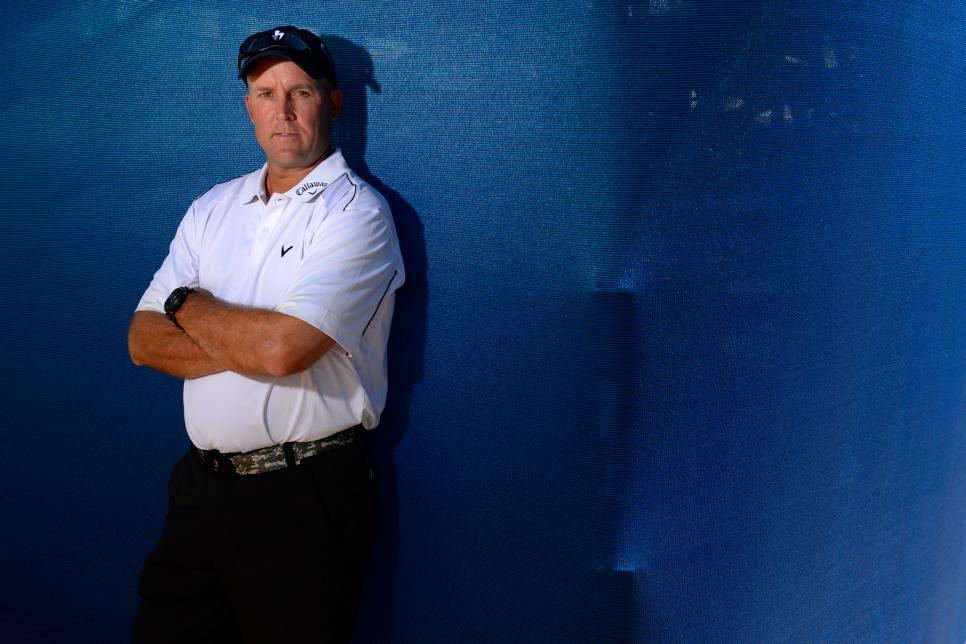
J.D. Cuban
The important thing is knowing who’s boss.
“There are times they are just so mad at you,” says Cesarz, a mountain of a man with the Rock of Gibraltar tattooed on his leg. “But the thing you have to remember is that the back of my shirt doesn’t say ‘Rock’ or ‘Cesarz.’ It says ‘Pressel.’ ”
Caddies say there is no substitute for being part of the action. “The competition is the best, the adrenaline rush,” Lubin says. “That’s why we’re here, trying to help our players win.”
And there is no substitute for the relationships they’ve developed. “You trust these guys, and you become a part of their lives,” says Lubin, who has a wife of 13 years and daughters 11 and 9. “The toughest part is leaving your family. Honestly, this is not something I want to do for the next 20 years,” says Lubin, reciting a line uttered by many caddies who’ve been out there longer than that.
“I love the game of golf, and I have a very supportive wife,” Killeen says. “I put in 150,000 miles on Delta last year. But I have 22 weeks off a year.”
Killeen’s first year on tour, in Las Vegas, he left his wallet on top of his car and drove off. Stranded with no money and no credit cards, he suddenly felt very far away from home.
“Roscoe Jones, who caddied for [Nancy] Lopez, handed me $500 and said, ‘Pay me back when you can.’ ” Killeen still shakes his head when he tells that story. “This job has helped me to be a father and let my children develop their own personality,” he says. “I’ve learned a lot about character out here, and I hope I’ve taught my children.”
That week in Phoenix, six of the eight missed the cut. The next week, Lubin was fired by Tseng. The week after that, the caddies were gathered around a table in the Beer Hunter Sports Pub & Grill in La Quinta, Calif., telling stories and laughing.
That’s what keeps them coming back: the laughter, the love of the game, the thrill of the hunt, and a real appreciation of each other. It’s a bond that never breaks.